Occupational environment monitoring at a cordyceps manufacturing factory
99,000 ₫
Note: The above price is calculated for one sample, and the price may fluctuate depending on the area of the environment to be monitored and market movements. For more accurate pricing support, please refer to the price list or contact our consulting staff directly.
Monitoring the environment of a cordyceps production factory is a session of collecting, analyzing, and evaluating workplace factors that may be harmful to workers health.
Table of Contents
Toggle1. Overview of Cordyceps Militaris Production Factory
a. What is a Cordyceps Militaris production factory?
Factory producing Cordyceps Militaris is a facility designed to cultivate, harvest, and process Cordyceps Militaris (also called caterpillar fungus), a rare mushroom with high nutritional and medicinal value. Cordyceps Militaris is considered one of the most valuable mushrooms in traditional East Asian medicine and has been used for thousands of years for health benefits and medicinal purposes.
The production process in the factory includes stages such as preparing the cultivation environment, initiating the cultivation cycle, planting and caring for Cordyceps Militaris, harvesting, pre-processing, and producing the final products. Care and maintenance of Cordyceps Militaris are critical to ensuring the quality and nutritional value of the product. The factory uses specialized procedures and equipment such as humidity-controlled cultivation rooms, temperature and humidity control systems, specialized lighting, and other technologies to create an optimal environment for the growth and development of Cordyceps Militaris.

b. Production stages in a Cordyceps Militaris factory
Production stages in a Cordyceps Militaris factory may include:
- Preparing the cultivation environment: Adjusting and preparing the environment suitable for the growth of Cordyceps Militaris. This includes selecting cultivation materials, preparing nutritional solutions, and regulating factors such as humidity, temperature, light, and ventilation.
- Initiating the cultivation cycle: Creating optimal conditions to start the cultivation process, including preparing the inoculum, treating the environment, and initiating the growth process of Cordyceps Militaris.
- Planting and caring for Cordyceps Militaris: Sowing spores or placing inoculum into the prepared cultivation environment. Adjusting environmental factors such as humidity, temperature, light, and ventilation to promote growth. Activities include watering, pruning, and pest control to ensure plant health and product quality.
- Harvesting: Once the mushrooms reach the appropriate growth stage and maturity, Cordyceps Militaris is harvested. The process generally includes cutting clusters, cleaning, and separating usable parts from waste.
- Pre-processing and final product production: Harvested Cordyceps Militaris is pre-processed and transformed into final products. This may include drying, refining, packaging, and canning to preserve quality and ensure product longevity.

c. Machinery used in Cordyceps Militaris factories
The following machinery and equipment are commonly used in Cordyceps Militaris factories:
- Environmental control machines: Systems that regulate temperature, humidity, light, and ventilation in the cultivation areas. These machines ensure that environmental factors are maintained at optimal levels for growth and development.
- Pruning machines: Used to trim Cordyceps Militaris plants, remove unnecessary branches, and shape the plants for optimal growth and efficient harvesting.
- Harvesting machines: Specialized machines designed to harvest Cordyceps Militaris efficiently. These machines include tools and technologies for precise cutting and rapid collection.
- Drying machines: After harvesting, Cordyceps Militaris needs to be dried to reduce moisture content and preserve quality. Drying machines use controlled heat and airflow to remove moisture effectively.
- Packaging machines: Used to package dried Cordyceps Militaris into bags or containers. These machines ensure precise, hygienic, and efficient packaging for product storage and preservation.

d. Occupational diseases for workers in Cordyceps Militaris factories
Workers in Cordyceps Militaris factories may encounter the following occupational diseases:
- Respiratory diseases: Long-term exposure to Cordyceps Militaris dust may cause respiratory problems such as pneumonia, bronchitis, rhinitis, and sinusitis.
- Allergies: Some workers may have allergic reactions to components in Cordyceps Militaris, causing itching, swelling, coughing, and nasal congestion.
- Skin diseases: Direct or prolonged contact with Cordyceps Militaris can lead to skin irritation, dermatitis, or other skin issues.
- Eye problems: Exposure to Cordyceps Militaris dust can cause eye irritation, conjunctivitis, and other eye-related issues.
- Cardiovascular issues: Physically demanding tasks in Cordyceps Militaris factories may contribute to cardiovascular problems, including hypertension and heart disease.
To prevent these occupational diseases, safety measures such as wearing masks, personal protective equipment, eye and skin protection, proper ventilation, and adherence to safe work procedures should be implemented. Additionally, environmental controls such as dust extraction, waste management, and safe work areas are crucial to protecting workers’ health.

e. Popular types of Cordyceps Militaris on the market
Some popular types of Cordyceps Militaris include:
- Black Cordyceps (Cordyceps sinensis): The most common and highly valued type, used in traditional medicine to improve health and treat illnesses.
- Golden Cordyceps (Cordyceps militaris): Another popular type, rich in nutrients and bioactive compounds. Used in medicine and as a dietary supplement.
- Red Cordyceps (Ophiocordyceps sinensis): Dark red in color, originating from the Himalayas and Tibet. Valued for its nutritional and medicinal properties.
- Royal Cordyceps (Cordyceps ophioglossoides): Economically and medicinally valuable, found in high-altitude regions and light in color.
- Silver Cordyceps (Cordyceps robertsii): Silver-colored, typically found in mountainous areas. Used in traditional medicine and as a dietary supplement.
2. Overview of occupational environment monitoring services
a. What is occupational environment monitoring in Cordyceps Militaris factories?
Occupational environment monitoring (or workplace environment measurement) in Cordyceps Militaris factories involves collecting, evaluating, and analyzing measurement indicators of workplace environmental factors. The goal is to implement timely measures to reduce environmental impacts on workers’ health and prevent occupational diseases. Monitoring is a mandatory requirement for Cordyceps Militaris factories.
Monitoring is crucial for protecting, maintaining, and enhancing workers’ health because the main resource of a business, directly generating profit, is its employees. Workers who are frequently exposed to risk factors exceeding allowable standards may suffer health impacts and occupational diseases.
REGISTER FOR OCCUPATIONAL ENVIRONMENT MONITORING SERVICE
b. An Toan Nam Viet’s occupational environment monitoring program
An Toan Nam Viet’s occupational environment monitoring program is developed by engineers specializing in occupational safety and environmental protection. Aiming to ensure worker health and safety, the program uses modern measurement methods to monitor air quality, water, microclimate, physical factors, and dust levels in the workplace. This program is critical for ensuring a safe work environment and protecting workers’ health.
Additionally, An Toan Nam Viet’s program plays an important role in researching and developing new solutions to improve workplace environmental quality. With the dedication and professionalism of its monitoring experts, An Toan Nam Viet’s exclusive program is a breakthrough in occupational safety and environmental management in Vietnam.

c. Standardization in workplace measurement procedures
Standardization in An Toan Nam Viet’s workplace measurement procedures is essential for ensuring result quality. To guarantee accuracy and reliability, the program follows recognized standards and procedures of the Ho Chi Minh City Department of Health. This ensures collected data is highly reliable for evaluating the workplace environment and making decisions to improve occupational safety.
These standardized procedures also ensure that measurements are conducted by highly qualified monitoring specialists with years of experience, allowing managers and experts to trust An Toan Nam Viet’s results and make accurate decisions to protect worker health and the environment.
By applying standardized procedures, An Toan Nam Viet demonstrates its commitment to a safe working environment, protecting workers’ health, and contributing positively to improving occupational safety and environmental management in Vietnam.
d. Reporting results of Cordyceps Militaris factory monitoring
Monitoring results are prepared according to Form No. 04, Appendix III issued with Decree 44/2016/ND-CP and prepared in two copies: one sent to the contracted workplace and one retained by the monitoring organization.
The retention period for monitoring results is indefinite according to legal regulations.

e. Frequency of occupational environment monitoring according to law
According to Clause 2, Article 18 of the Law on Occupational Safety and Health 84/2015/QH13, employers must conduct occupational environment monitoring to assess harmful factors at least once a year.
f. Deadline for submitting occupational environment monitoring reports according to law
The deadline for submission is before December 31 each year. Enterprises operating production facilities are required to submit monitoring reports to the local Department of Health where the facility is headquartered and where employees work.
If there are changes in technology, production processes, or renovations/upgrades that may generate new harmful factors affecting workers’ health, enterprises must update occupational hygiene records related to monitored factors.
g. Penalties for violations of occupational environment monitoring by employers
According to Article 27 of Decree No. 12/2022/ND-CP dated January 17, 2022, regulating administrative penalties in labor, social insurance, and Vietnamese workers working abroad under contract:
- Clause 2: Fines from 2,000,000 – 5,000,000 VND for employers who fail to publicly inform employees at the monitored site and evaluated site immediately after receiving monitoring results and hazard evaluation outcomes.
- Clause 3: Fines from 20,000,000 – 40,000,000 VND for employers who do not conduct occupational environment monitoring to control health risks according to the law.
- Clause 4: Fines from 40,000,000 – 60,000,000 VND for employers who collude with monitoring organizations to commit fraud in monitoring activities, but not to the level of criminal liability.
3. Harmful Environmental Factors for Workers in Cordyceps Production Factories
Workers in cordyceps production factories may be exposed to the following harmful environmental factors:
- Dust and chemical vapors: During cordyceps production, dust may arise from raw materials and processing. Additionally, chemicals such as pesticides, preservatives, and solvents can produce harmful vapors. Long-term exposure to dust and toxic vapors can cause respiratory, skin, and eye problems.
- Temperature and humidity: Cordyceps production often requires specific temperature and humidity conditions. Working in high-temperature or excessively humid environments can cause discomfort and negatively impact workers’ health.
- Noise: Machinery and equipment in cordyceps factories can generate high noise levels. Prolonged exposure to noise can damage hearing and cause stress and fatigue for workers.
- Lighting: Some production processes require specific lighting to support growth and production. However, strong or improperly used lighting can cause glare and affect workers’ vision.
- Waste and pollution: Cordyceps production can generate waste and environmental pollution, such as organic waste and processing residues. Exposure to waste and pollutants can harm workers’ health.
REGISTER FOR OCCUPATIONAL ENVIRONMENT MONITORING SERVICE
4. Measures to Improve the Working Environment in Cordyceps Production Factories
To improve the working environment in cordyceps production factories, the following measures can be applied:
- Dust and chemical vapor management: Implement dust control measures such as dust extraction systems, respiratory protection, and personal protective equipment like masks. For chemical vapors, follow safe working procedures and use effective ventilation and vapor extraction methods.
- Temperature and humidity adjustment: Maintain comfortable working conditions with suitable temperature and humidity. Use air conditioning, ventilation fans, and other equipment to ensure a fresh and comfortable work environment.
- Noise management: Provide hearing protection for workers and ensure noise from machinery and equipment is controlled within safe limits. Design and operate factories to minimize noise exposure as much as possible.
- Lighting: Provide adequate natural and artificial lighting to ensure safe and comfortable working conditions. Ensure even light distribution and avoid excessive glare.
- Waste and pollution management: Apply safe and effective waste treatment processes, ensuring waste is properly processed and disposed of according to regulations. Implement preventive measures against environmental pollution and comply with environmental management regulations.
- Training and supervision: Train workers on safe working procedures, use of personal protective equipment, and preventive measures against occupational diseases.
- Regularly conduct occupational environment monitoring in factories, collect and analyze harmful factors, and implement adjustments to reduce hazards and prevent occupational diseases for workers.
5. Benefits of Periodic Cordyceps Factory Environment Monitoring
An Toan Nam Viet provides businesses with outstanding benefits when using occupational environment monitoring services according to Decree 44/2016/NĐ – CP on the management and control of harmful factors in the workplace affecting workers.
- Businesses can proactively control harmful factors in workshops or factories.
- Receive advice and recommendations to minimize harmful factors and improve workplace environmental quality.
- Indirectly protect human resources, the key factor in business development.
- Reduce the impact of occupational diseases on health, minimizing future medical costs.
- Improved worker health leads to higher product quality and ensures consistent production output.
- Comply with labor safety regulations and avoid legal risks.
- Enhance credibility and professionalism, elevating the company’s brand.
An Toan Nam Viet’s environmental monitoring service is a solution to reduce occupational disease risks, contributing to a clean and high-quality working environment.

6. Nationwide Occupational Environment Monitoring Center
An Toan Nam Viet Occupational Environment Monitoring Center is a professional unit for supervising and measuring occupational environment quality across all provinces in Vietnam. With experienced monitoring specialists, the center uses modern measuring equipment to ensure accuracy and reliability.
In addition to monitoring services, the center supports clients in planning, handling, and tracking occupational environment issues. With the motto “customer-centric,” the center prioritizes client satisfaction and provides optimal solutions for businesses.
REGISTER FOR OCCUPATIONAL ENVIRONMENT MONITORING SERVICE
With investments in technology, equipment, and workforce, An Toan Nam Viet’s monitoring center has become a reputable unit in occupational environment monitoring in Ho Chi Minh City with the following objectives:
- We value our brand reputation and service quality.
- We provide clients with the best and most suitable solutions.
- Alongside experienced Masters and Engineers, aiming to protect the environment and benefit businesses.
- Clients using An Toan Nam Viet monitoring services receive professional support from experts and the best cost advantages.
The occupational environment monitoring process at An Toan Nam Viet includes the following steps:
- Before monitoring, ensure all equipment is calibrated according to legal regulations.
- Follow the committed occupational environment monitoring procedures with the Department of Health.
- Report monitoring results truthfully to employers.
- If results indicate unsafe conditions, An Toan Nam Viet will support remediation measures and the workplace will:
- Implement measures to improve working conditions, minimizing harmful factor exposure and preventing occupational diseases.
- Organize health check-ups to detect occupational diseases early for workers in unsafe positions.
- Provide material compensation to workers according to labor law regulations.

7. Occupational Environment Monitoring Pricing
To help businesses conduct professional and effective occupational environment monitoring, An Toan Nam Viet provides a detailed price list for monitoring services with quality and reasonable costs.
- Our price list provides detailed information on all monitoring services offered, including costs for travel, measurement, analysis, and reporting. Clients can trust the accuracy and reliability of our monitoring reports.
- We commit to offering competitive and reasonable prices, while providing fast and professional consultation for all monitoring service inquiries.
- With An Toan Nam Viet’s monitoring price list, clients can easily select service packages suitable for their needs, ensuring maximum satisfaction with professional service quality.
No comments yet

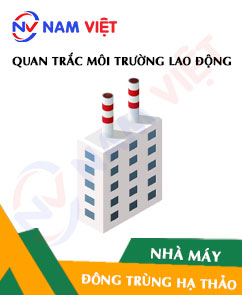
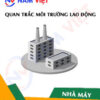
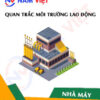
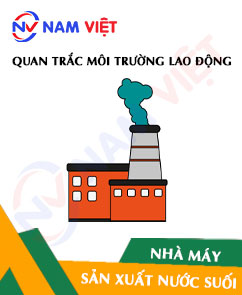
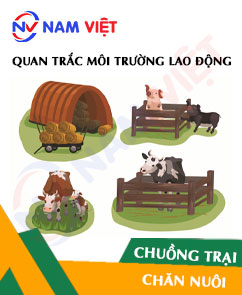
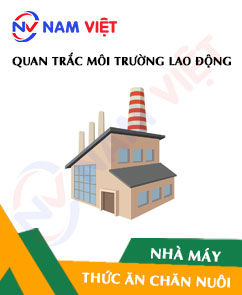
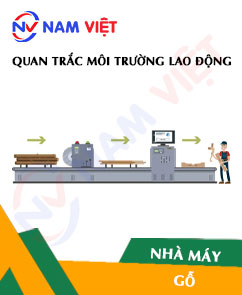

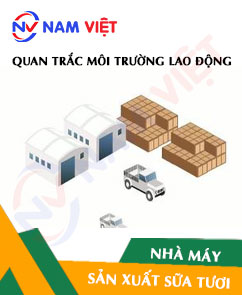


Review Occupational environment monitoring at a cordyceps manufacturing factory
There are no reviews yet.